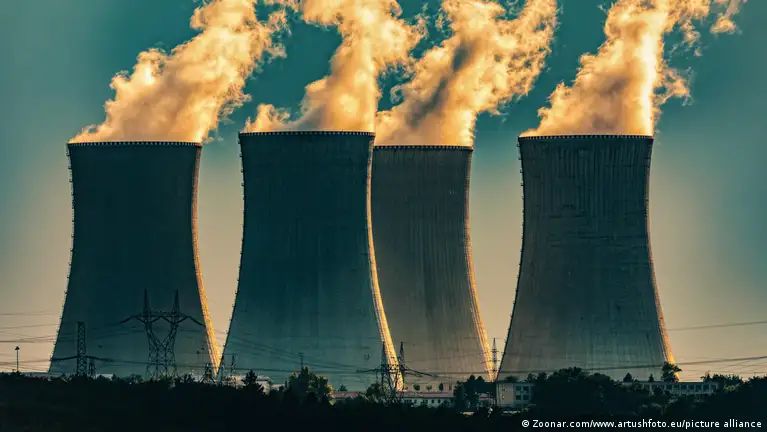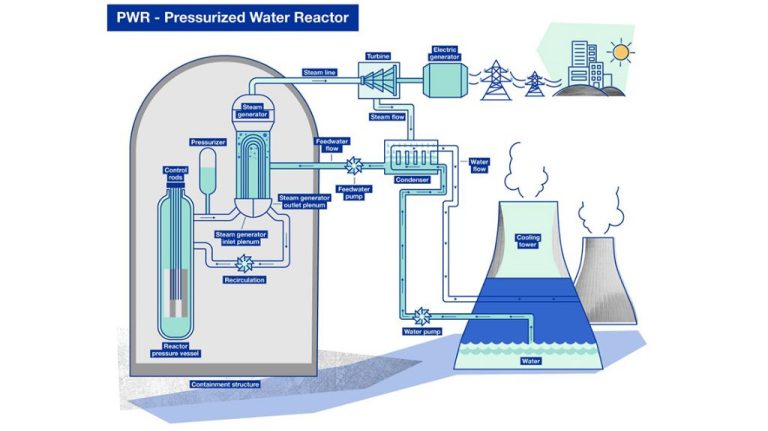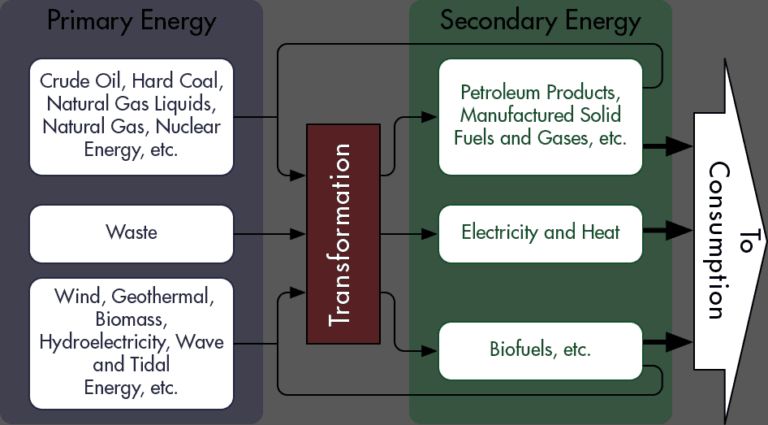What Is The Main Energy Source For Producing Electricity?
Electricity is an essential part of modern life that powers our homes, businesses, transportation, and communication systems. Globally, trillions of kilowatt-hours of electricity are generated each year to meet ever-growing demand. Producing all this electricity requires harnessing massive amounts of energy from primary sources like fossil fuels, nuclear power, and renewable resources.
Fossil fuels such as coal, natural gas, and oil have historically been the dominant fuels for generating electricity. However, concerns over pollution, climate change, and energy security have led to major growth in renewable sources like solar, wind, and hydropower. Nuclear power also produces a substantial share of electricity in some parts of the world.
The mix of energy sources used to generate electricity varies greatly by country and region, shaped by geographical, economic, and policy factors. As the world seeks to power more human development with cleaner energy, the electricity sector is transforming amid shifting consumption patterns, new technologies, and changing fuel costs and availability.
Fossil Fuels
Fossil fuels like coal, natural gas, and petroleum have historically been the dominant sources for electricity generation globally. Fossil fuels are formed over millions of years from buried organic matter and contain high amounts of carbon. When burned, the carbon is released into the atmosphere as carbon dioxide (CO2).
Coal fueled the Industrial Revolution and has been used for electricity production for over a century. It remains a major source of power globally, providing about 27% of the world’s electricity. However, coal is generally declining as nations move away from it due to pollution concerns. Coal emits more CO2 per unit of electricity than other fossil fuels.
Natural gas generates 22% of global electricity. It produces fewer emissions than coal when burned. The advent of hydraulic fracturing and directional drilling has unlocked vast new shale gas reserves, making natural gas cheap and abundant in countries like the United States.
Petroleum accounts for about 3% of global electricity but remains essential for transportation. Petroleum’s use for electricity peaked decades ago and has declined due to cost and environmental concerns. However, petroleum still generates some power where oil is plentiful.
Renewables
Renewable energy sources such as hydro, wind, solar, geothermal and biomass are playing an increasing role in electricity production around the world. These sources provide clean alternatives to fossil fuels and help diversify countries’ energy mixes.
Hydropower harnesses the energy from flowing water to generate electricity. Major hydropower projects involve damming rivers to control water flow. Hydropower supplies 16% of the world’s electricity and over 70% in some countries with abundant hydro resources like Brazil, Canada and Norway.
Wind power converts the kinetic energy of wind into mechanical power through wind turbines. Installed global wind capacity has grown rapidly to around 600 GW. Wind now provides over 5% of global electricity demand. Major markets include China, the US and Germany.
Solar photovoltaics convert sunlight directly into electricity using panels made up of solar cells. Solar PV capacity has expanded exponentially in the last decade to over 500 GW as costs have plunged. Solar contributes nearly 3% of global power and much higher shares in leading markets like Germany and Australia.
Geothermal energy harnesses heat from beneath the earth’s surface for heating or to generate power. High temperature geothermal resources are used for geothermal power plants, while lower temperature sources are used for direct heating applications. Global geothermal power capacity is around 14 GW.
Biomass involves burning organic matter like wood, agricultural waste and biofuels to produce electricity. It supplies around 2% of global electricity. Co-firing biomass with coal is one way to reduce carbon emissions from coal power generation.

Nuclear
Nuclear power provides a significant portion of electricity generation in some parts of the world, but remains controversial and has seen limited growth over the past few decades. As of 2019, nuclear accounted for about 10% of global electricity generation. The technology relies on radioactive elements like uranium to produce heat and spin turbines. While nuclear plants emit minimal greenhouse gases, concerns persist around safety, radioactive waste disposal, and nuclear proliferation. Major nuclear accidents like Chernobyl and Fukushima have further dampened growth. Nevertheless, nuclear remains attractive to some due to its reliable baseload power and lack of carbon emissions. Existing plants continue operating in areas like France, where 70% of electricity comes from nuclear. But new construction is focused primarily in parts of Asia. For nuclear to see wider adoption, countries will likely need to implement more standardized reactor designs and solve problems around cost and waste management. Overall, nuclear power will likely play a role in the global energy mix but is unlikely to drive major growth.
Regional Differences
Around the world, the main sources for electricity production vary significantly by region and country based on several factors like resource availability, government policies, public opinion, and energy infrastructure.
Asia relies heavily on fossil fuels like coal and natural gas for power generation. China and India in particular have built hundreds of new coal plants in recent years to fuel economic growth and rising electricity demand. Coal provides about 60-70% of electricity in China and India.
In Europe, renewables like wind and solar have grown rapidly due to favorable policies and declining technology costs. Countries like Denmark, Germany, and Spain now source over 30-45% of electricity from renewables. However, natural gas remains important across Europe for flexible power generation.
France is unique in generating over 70% of its electricity from nuclear power due to a longstanding national commitment to nuclear. However, France aims to reduce nuclear dependence and increase renewables over time.
The UK, Sweden and Switzerland also rely heavily on nuclear. Meanwhile, Iceland produces nearly 100% of its electricity from renewable geothermal and hydropower resources.
Japan relied on nuclear for around 30% of electricity before the Fukushima disaster in 2011. Since then Japan has been replacing that nuclear capacity mainly with imported fossil fuels as renewable growth has been slower.
In the U.S. and Canada, coal remains important but is declining, while cheap shale gas has driven growth in natural gas power plants. Renewables are also rising, led by wind and solar especially in certain states and provinces.
Costs
The cost of electricity generation has historically favored fossil fuels like coal, natural gas, and oil. These traditional energy sources benefit from established infrastructure and economies of scale that keep prices relatively low. For example, a new natural gas power plant can generate electricity for around $1000 per kilowatt hour.
However, costs for renewable energy like solar and wind have fallen dramatically in the last decade. According to Lazard’s annual analysis, the unsubsidized levelized cost of energy (LCOE) for solar PV and onshore wind declined by 90% and 71% respectively between 2009 and 2020. Technological improvements, manufacturing scale, and tax incentives have all contributed to lowering costs. The LCOE for utility-scale solar PV is now under $40 per megawatt hour, cheaper than natural gas peaker plants.
As renewable energy continues to gain market share, economies of scale and technological advances are expected to further reduce costs. The International Renewable Energy Agency predicts that solar electricity will be consistently cheaper than fossil fuels globally by 2030. If these trends continue, the cost advantage of traditional energy sources may diminish or disappear entirely.
Environmental Impact
The environmental impact of different energy sources varies greatly. Fossil fuels like coal, oil and natural gas have the largest negative impact on the environment as their combustion releases greenhouse gases like carbon dioxide and methane, which drive global climate change.
According to the EPA, the electricity sector accounted for 25% of global greenhouse gas emissions in 2019, with coal generating over 70% of the sector’s emissions. Burning coal also produces air pollutants like sulfur dioxide, nitrogen oxides and particulate matter that harm human health.
In comparison, most renewable energy sources like solar, wind and hydropower have minimal emissions associated with their electricity generation. Nuclear power also has low carbon emissions, but carries risks of nuclear accidents and radioactive waste disposal.
As the world looks to transition to a low-carbon energy system, the growth of renewables and phase out of fossil fuels, especially coal, will be critical to reducing greenhouse gas emissions and avoiding the worst impacts of climate change.
Energy Security
Energy security refers to having a reliable and resilient supply of energy to meet a country’s needs. For decades, many nations have relied heavily on imported fossil fuels like oil and natural gas. This has exposed them to geopolitical risks when relationships with exporting nations deteriorate. For example, during the 1970s OPEC oil embargo, many countries faced energy shortages and price spikes after oil exports were restricted. The risks of relying on imported fossil fuels have become evident again in 2022, as the Russia-Ukraine war has led to global spikes in natural gas and oil prices. Many European nations who imported natural gas from Russia have scrambled to find alternative supplies.
In contrast, renewable energy obtained from domestic sources like wind, solar, hydropower and biofuels provide energy independence. Renewables allow countries to rely less on imports and reduce the risks of supply disruptions or price hikes. Local renewables also reduce vulnerability to international conflicts or trade disputes. Energy independence has become a strategic priority for many nations as renewables expand. The desire for energy security will likely drive further growth in renewable energy production in the years ahead.
Future Outlook
The energy landscape is expected to undergo major changes in the coming decades as countries seek to reduce carbon emissions and mitigate climate change. Renewable sources like solar and wind are poised to see massive growth, thanks to declining costs and supportive government policies.
The costs of renewables like solar PV and onshore wind have dropped dramatically in the past decade, making them increasingly competitive with fossil fuels. This trend is expected to continue as technology improves and economies of scale further reduce costs. According to projections, renewables will account for over 60% of new power generation capacity added globally through 2040.
Many countries have enacted policies to phase out coal power and ramp up renewables. The European Union aims to generate 32% of its energy from renewables by 2030. China plans to get 25% of its power from renewables by 2030. Similar national targets exist in India, Japan and other countries. Government subsidies and mandates to add renewable capacity will be key drivers of growth.
In summary, declining costs coupled with supportive policies are projected to spur massive growth in renewables like solar and wind power in the coming decades. This will lead to a fundamental transformation of electricity generation globally, reducing reliance on fossil fuels and lowering carbon emissions.
Conclusion
In summary, fossil fuels like coal, oil, and natural gas remain the primary source for generating electricity globally, supplying over 60% of the world’s electricity. While renewable sources like solar, wind, hydropower and biofuels are growing quickly, they still only account for around 25% of global electricity generation. Nuclear power provides about 10% currently. The energy mix varies widely between countries and regions based on the natural resources available as well as government policies and investments. Going forward there is increased focus on transitioning to lower carbon energy sources for electricity production given concerns around climate change and energy security. However this transition will take time given the established infrastructure for fossil fuels. Key renewable sources are expected to continue strong growth, with solar and wind likely reaching up to 30% of global electricity generation by 2030. However coal, natural gas and oil will likely still remain the dominant sources over the next decade, highlighting the ongoing role of fossil fuels in powering the modern world.





